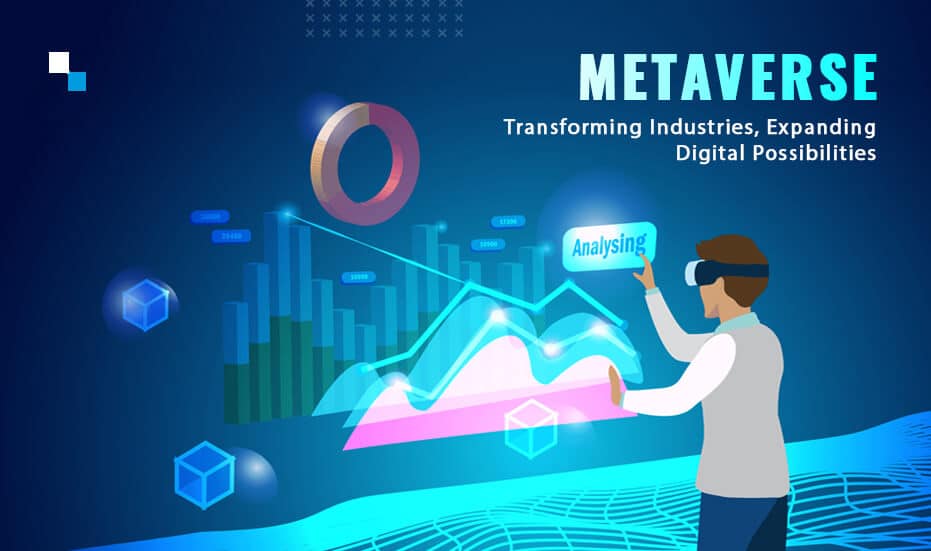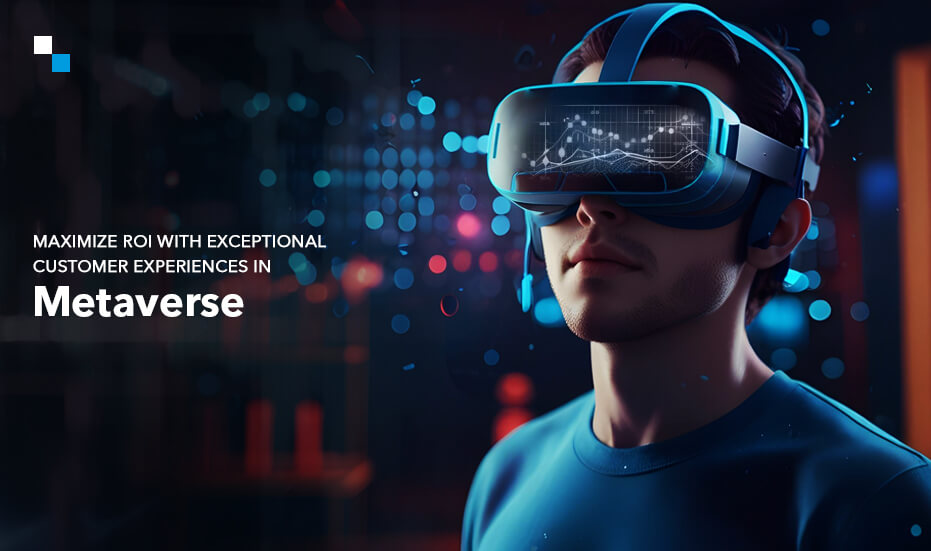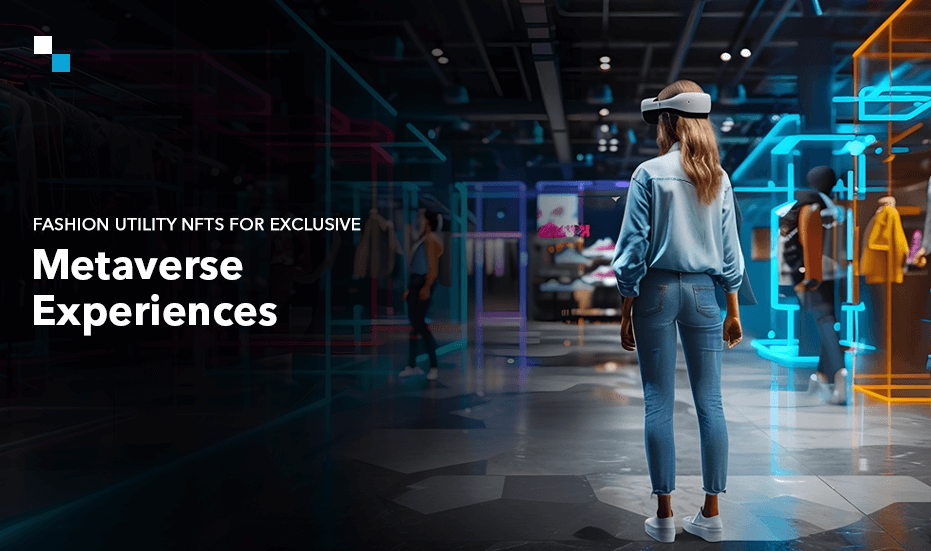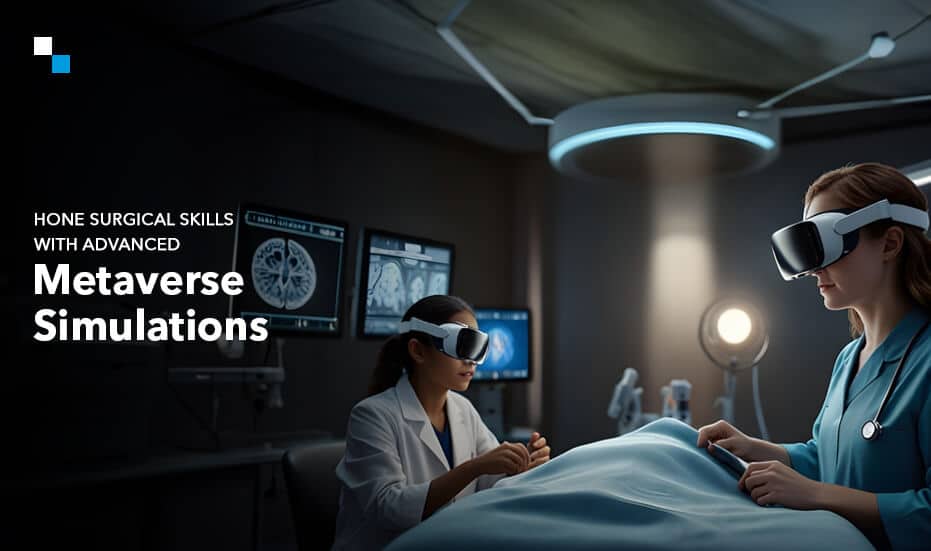
Everything You Need To Know About Smart Contract Auditing in 2023
June 2, 2023
How to Build a DeFi App-A Step-by-Step Guide
June 5, 2023The concept of the metaverse has taken the world by storm, capturing the imaginations of individuals, businesses, and industries alike. As a virtual realm where people can interact with each other and digital objects, the metaverse offers boundless possibilities and opportunities. From gaming and entertainment to education and commerce, the Metaverse development is revolutionizing the way we connect, collaborate, and experience the digital world. In this article, we will dive into the trending metaverse use cases that are reshaping various sectors and explore how they are transforming our lives.
What do the statistics suggest?
In 2022, it was predicted that the worldwide metaverse market would be worth USD 65.5 billion. From 2023 to 2030, it is anticipated to expand at a compound annual growth rate (CAGR) of 41.6%. The rise in interest in using the Internet to integrate the physical and digital worlds, the popularity of mixed reality (MR), augmented reality (AR), and virtual reality (VR), the COVID-19 outbreak, and the developments that follow, and outcomes of the situation are some of the key factors anticipated to drive the revenue growth.

Metaverse trends in the current scenario
The concept of the metaverse has gained widespread attention and understanding, leading to increased adoption across industries. Businesses, organizations, and individuals are recognizing the potential of the metaverse and actively exploring its applications and opportunities.
In the current scenario, the metaverse is experiencing significant trends that are shaping its development and impact across various sectors. Here are some of the key metaverse development trends:
1. Integration with Emerging Technologies
The metaverse is converging with other emerging technologies, such as virtual reality (VR), augmented reality (AR), blockchain, and artificial intelligence (AI). These integrations enhance the immersive and interactive aspects of the metaverse, enabling more realistic experiences and decentralized economies.
2. Cross-Platform Accessibility
The metaverse is becoming more accessible across different devices and platforms. It is not limited to specific hardware or software, allowing users to engage with the metaverse through smartphones, tablets, PCs, and VR headsets. This cross-platform accessibility broadens the user base and increases participation in metaverse use cases.
3. Virtual Economies and Digital Assets
Virtual economies within the metaverse are flourishing, with the emergence of digital currencies and non-fungible tokens (NFTs). Virtual assets, including digital art, virtual real estate, and collectibles, are being bought, sold, and traded within the metaverse, creating new economic opportunities for creators and entrepreneurs.
4. Collaborative and Social Experiences
The metaverse development technology is evolving into a space that emphasizes collaboration and social interaction. Virtual social platforms and multiplayer experiences enable users to connect, communicate, and share experiences with others from around the world. This trend fosters a sense of community, enhances engagement, and encourages collective creativity.
5. Personalization and Customization
Users are demanding more personalization and customization options within the metaverse. From avatar creation and customization to virtual spaces and experiences, the ability to tailor the metaverse to individual preferences and identities is gaining importance.
6. Integration with Real-World Applications
The metaverse is increasingly integrated with real-world applications and industries. For example, in real estate, virtual property tours and showrooms within the metaverse have become valuable tools for buyers and sellers. Similarly, in healthcare, virtual reality-based therapies and medical training simulations are leveraging the metaverse for enhanced patient care and professional development.
Metaverse Use Cases
The current metaverse trends indicate a growing interest, integration, and exploration of its potential. The metaverse is evolving into a dynamic and interconnected digital realm that holds immense opportunities for innovation, collaboration, and transformative experiences.
Here are some of the popular use cases of metaverse development:
Metaverse Use Cases in Gaming & Virtual Reality
- Immersive Gaming Experiences: Metaverse Game Development trends have transformed the gaming industry by offering immersive experiences. Players can enter virtual worlds, interact with other gamers, and engage in multiplayer games, creating a dynamic and social gaming environment.
- Virtual Reality Integration: With virtual reality (VR) technology, the metaverse provides even more immersive gaming experiences. Players can physically interact with the virtual environment, enhancing realism and creating a deeper sense of presence.
- Virtual Events and Tournaments: The metaverse hosts virtual events and tournaments, bringing gamers from around the world together. These events provide opportunities for competition, collaboration, and community building, fostering a vibrant gaming ecosystem.
Examples:
- Fortnite: Fortnite, developed by Epic Games, has become a prime example of metaverse-like experiences in gaming. It offers a virtual world where players can interact, compete, and explore together. With its live events and collaborations with popular franchises, Fortnite has created a dynamic metaverse-like environment that keeps players engaged and connected.
- Roblox: Roblox is a user-generated content platform that allows players to create and share their own games within a metaverse-like ecosystem. It provides a vast range of experiences, from virtual theme parks to role-playing adventures, enabling players to socialize, collaborate, and monetize their creations.
- Minecraft: Minecraft, a popular sandbox game, has embraced the concept of a metaverse by providing a platform for players to build and explore virtual worlds. With its multiplayer mode and extensive modding community, Minecraft has become a thriving metaverse-like ecosystem where players can create, share, and interact with their virtual creations.
Metaverse Use Cases in Socializing & Communication
- Virtual Social Platforms: The metaverse offers virtual social platforms where individuals can create avatars, socialize, and connect with others. These platforms enable real-time communication, fostering new friendships, and facilitating global connections.
- Virtual Parties and Gatherings: Within the metaverse, users can attend virtual parties, concerts, and social gatherings. These events provide a shared experience and allow individuals to engage in social interactions regardless of physical distance.
- Virtual Conferencing and Collaboration: Metaverse development facilitates virtual conferencing and collaboration, enabling teams and organizations to connect and work together remotely. Virtual meeting spaces within the metaverse offer an immersive and interactive environment for real-time communication and collaboration.
Examples:
- Facebook Horizon: Facebook Horizon is an example of a metaverse-like platform that focuses on socializing and communication. It allows users to create their virtual avatars and interact with others in customizable virtual environments. Users can engage in activities like games, attend virtual events, and collaborate on creative projects, fostering social connections and communication within the metaverse.
- VRChat: While VRChat was mentioned earlier as a gaming example, it also serves as a prominent metaverse use case for socializing and communication. Users can meet, socialize, and communicate with people from around the world in virtual environments. It offers a wide range of activities, such as attending virtual parties, exploring user-generated content, and participating in themed events, enabling rich social interactions within the metaverse.
- AltspaceVR: AltspaceVR is a social VR platform that allows users to socialize and communicate in virtual reality. It offers virtual spaces where users can gather, engage in conversations, attend live events such as comedy shows and concerts, and even host their own events. AltspaceVR provides a metaverse-like environment that promotes social connections and meaningful communication through immersive experiences.
Metaverse Use Cases in Education & Training
- Virtual Classrooms and Training Simulations: The metaverse provides virtual classrooms and training simulations, enhancing educational experiences. Students can engage in interactive learning activities, explore virtual environments, and participate in simulations that simulate real-world scenarios.
- Global Collaboration and Knowledge Sharing: The metaverse allows students and educators from around the world to collaborate and share knowledge. Virtual classrooms and educational platforms within the metaverse break down geographical barriers, promoting cross-cultural learning and collaboration.
- Skill Development and Professional Training: The Metaverse education platform development specialists offer opportunities for skill development and professional training. Virtual environments within the metaverse provide realistic simulations for training in various fields, such as healthcare, aviation, and emergency response.
Examples:
- Engage: Engage is a virtual reality platform designed for educational and training purposes. It offers a wide range of immersive learning experiences, including virtual classrooms, interactive simulations, and virtual field trips. Engage enables students and trainees to engage with educational content, collaborate with peers, and receive hands-on training in various subjects and industries within the metaverse.
- Project Sansar: Project Sansar is a virtual reality platform that supports educational and training experiences. It allows educators to create virtual classrooms, conduct lectures, and facilitate interactive discussions. Project Sansar enables students to immerse themselves in virtual environments tailored to specific educational content, offering a unique and engaging learning experience within the metaverse.
Metaverse Use Cases in Virtual Commerce & Marketplaces
- Virtual Stores and Marketplaces: The metaverse hosts virtual stores and marketplaces where users can buy and sell digital and virtual goods. Virtual currencies and NFTs (non-fungible tokens) facilitate secure and decentralized transactions within the metaverse.
- Virtual Fashion and Personalization: Inside the metaverse, users can customize their avatars and purchase virtual clothing, accessories, and digital assets. Virtual fashion and personalization options provide new avenues for self-expression and creativity.
- Virtual Real Estate and Property Ownership: The metaverse enables virtual real estate ownership, allowing users to buy and sell virtual land and properties. Virtual property ownership provides opportunities for investment, creativity, and virtual business ventures.
Examples:
- Decentraland: Decentraland is a blockchain-based virtual world that serves as a metaverse use case for virtual commerce and marketplaces. Within Decentraland, users can buy, sell, and trade virtual land and assets using cryptocurrency. It provides a decentralized marketplace where users can create and monetize their virtual creations, such as art, virtual fashion, and digital goods. Decentraland’s virtual commerce ecosystem enables users to participate in a virtual economy and engage in virtual transactions within the metaverse.
- The Sandbox: The Sandbox is a blockchain-powered virtual world that offers a metaverse use case for virtual commerce and marketplaces. It allows users to create, share, and monetize their own virtual experiences and assets, including games, virtual attractions, and interactive content. Users can buy and sell virtual land, NFTs, and in-game assets within The Sandbox marketplace. The platform provides a dynamic ecosystem for creators and users to engage in virtual commerce, creating new opportunities for monetization and collaboration within the metaverse.
Metaverse Use Cases in Healthcare & Therapy
- Virtual Reality-Based Therapy: The metaverse offers virtual reality-based therapy for various mental health conditions. Virtual environments within the metaverse provide a safe space for patients to confront and overcome fears, phobias, and post-traumatic stress disorders.
- Telemedicine and Remote Consultations: The metaverse enhances telemedicine by providing virtual environments for remote consultations and healthcare services. Patients can connect with healthcare professionals, receive diagnoses, and access treatment options without physical travel.
- Medical Training and Simulations: Metaverse in healthcare provides realistic and immersive training simulations for healthcare professionals. Medical students and practitioners can practice procedures, learn new techniques, and gain hands-on experience within virtual environments.
Examples:
- Apollo Hospitals: The Apollo Hospital Group has revealed a novel partnership with “8chili Inc” to facilitate participation in the metaverse.
- IoTeX: With its current remote monitoring capabilities, the IoTeX project has the potential to benefit patients. The HealthBlocks project, which was constructed using IoTeX from the ground up, will compensate users for altering their daily routines in order to lead healthier lives.
Metaverse Use Cases in Real Estate
- Virtual Property Tours: With the metaverse, potential buyers can explore properties through immersive virtual tours. They can navigate through different rooms, examine details, and even customize aspects such as interior design and furniture placement. Virtual property tours provide a realistic and interactive experience, saving time and resources for both buyers and sellers.
- Virtual Property Showrooms: Real estate developers and agents can create virtual showrooms within the metaverse to showcase properties. These showrooms allow prospective buyers to visualize and interact with different floor plans, finishes, and amenities. Virtual property showrooms provide a cost-effective and flexible way to market properties, reaching a wider audience without physical limitations.
- Remote Collaboration and Design: Metaverse development in real-estate facilitates remote collaboration among architects, designers, and clients. Through virtual environments, stakeholders can work together to design and visualize spaces, make real-time modifications, and provide feedback. This streamlines the design process, reduces costs, and ensures effective communication among all parties involved.
- Virtual Staging: Empty or unfurnished properties can be virtually staged within the metaverse. Virtual staging involves digitally adding furniture, decor, and other elements to make the property more appealing to potential buyers. This technique allows buyers to envision the space’s potential and helps expedite sales by creating an emotional connection.
Examples:
- Decentraland: Decentraland is a blockchain-based virtual world that allows users to buy, sell, and trade virtual land and assets. It offers a metaverse real estate platform where users can create, develop, and monetize virtual properties. Users can build virtual structures, establish businesses, and participate in a virtual economy within the Decentraland metaverse.
- The Sandbox: The Sandbox is a user-generated content platform that focuses on virtual real estate and game creation. Users can buy, sell, and trade virtual land parcels within The Sandbox metaverse. The platform provides tools for users to design, develop, and monetize their virtual creations, including virtual real estate, games, and experiences. It offers a vibrant marketplace for virtual real estate and a community-driven ecosystem.
- Somnium Space: Somnium Space is a blockchain-based virtual reality platform that emphasizes virtual real estate. Users can buy, sell, and own virtual land within the Somnium Space metaverse. The platform allows users to build, create, and monetize their virtual properties and experiences. It also hosts events, virtual exhibitions, and social activities within its immersive virtual world.
Metaverse Use Cases in Employee Onboarding
- Virtual Onboarding Programs: Companies can create virtual onboarding programs within the metaverse, providing new employees with a comprehensive introduction to the organization. Through interactive virtual environments, new hires can learn about the company’s culture, values, policies, and procedures. They can also virtually meet key team members, participate in training modules, and familiarize themselves with their roles and responsibilities.
- Immersive Training Simulations: Metaverse development allows organizations to conduct immersive training simulations for new employees. These simulations replicate real-world scenarios, enabling new hires to practice and refine their skills in a safe virtual environment. From customer interactions to complex problem-solving situations, immersive training simulations within the metaverse enhance learning outcomes and boost confidence.
- Virtual Networking and Mentorship: Networking and mentorship play crucial roles in an employee’s professional development. The metaverse facilitates virtual networking events and mentorship programs where new hires can connect with experienced professionals within the organization. Through virtual interactions, new employees can seek guidance, gain insights, and build relationships that foster growth and development.
Example:
- AltSpaceVR: AltSpaceVR is a social virtual reality platform that can be utilized for employee onboarding. It offers immersive and interactive spaces where employees can meet, socialize, and engage in virtual activities. Companies can create dedicated onboarding experiences within AltSpaceVR, providing new hires with a virtual environment to meet their team members, attend virtual orientation sessions, and participate in team-building exercises, promoting engagement and connection from day one.
Metaverse Use Cases in Virtual Office
- Virtual Meeting Spaces: Virtual meeting spaces within the metaverse allow teams to gather and collaborate regardless of physical location. These spaces replicate real-life conference rooms or informal meeting areas, providing a sense of presence and fostering effective communication. Teams can conduct meetings, brainstorm ideas, and share documents in real-time, enhancing productivity and teamwork.
- Virtual Co-Working Environments: With the metaverse, individuals can work in virtual co-working environments where they can interact with other professionals from different industries. These environments provide a sense of community, enabling remote workers to combat isolation and build connections. Virtual co-working spaces also offer access to resources, networking opportunities, and educational events.
- Customizable Workspaces: The metaverse allows individuals to customize their virtual workspaces according to their preferences and needs.
Examples:
- Spatial: Spatial is a metaverse platform designed for collaboration and remote work. It offers a unique onboarding experience by creating virtual meeting spaces where new employees can interact with their team members and explore virtual environments together. Spatial enables immersive and interactive onboarding sessions, allowing employees to engage in virtual icebreakers, presentations, and group activities, fostering connection and familiarity in a virtual setting.
- Virbela: Virbela is a virtual world platform that provides a metaverse solution for remote work and team collaboration. It offers customizable virtual office spaces where employees can gather, communicate, and collaborate. Virbela’s platform allows companies to create dedicated onboarding areas within their virtual offices, providing a simulated office environment where new employees can meet their colleagues, access resources, and receive guidance during the onboarding process.
Conclusion
The metaverse is rapidly evolving, and its use cases continue to expand across various sectors. From gaming and entertainment to education, commerce, healthcare, and beyond, the metaverse is transforming the way we interact, learn, conduct business, and experience the digital world.
As metaverse development continues to evolve, we can expect to witness even more innovative and immersive applications that enhance our lives in ways we never thought possible. The metaverse is a gateway to a new dimension of connectivity, creativity, and collaboration, shaping the future of how we interact with digital environments and redefining the boundaries of the human experience.
Want to set unique examples of metaverse use cases? Connect with Antier, the blockchain and metaverse ace today!



